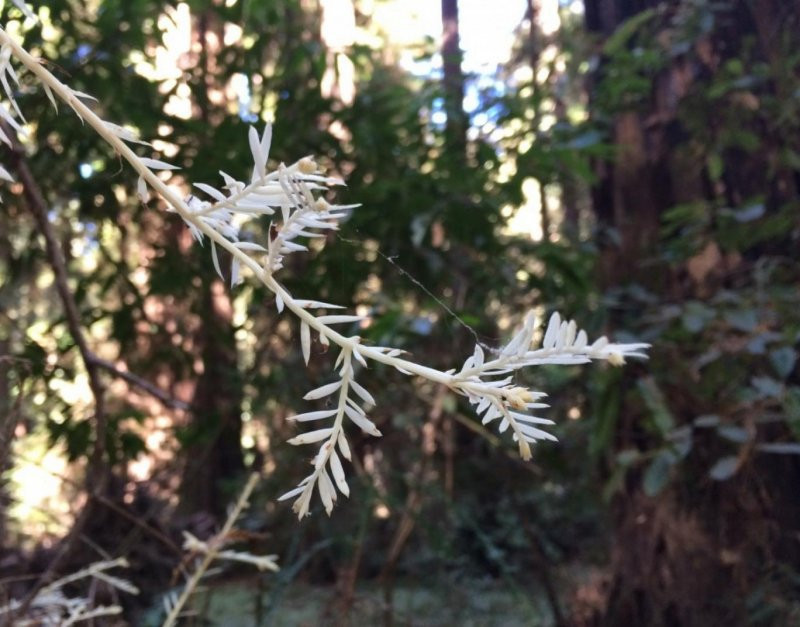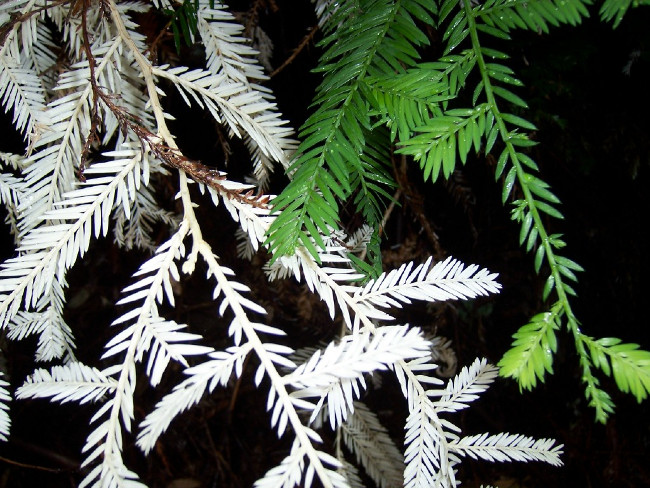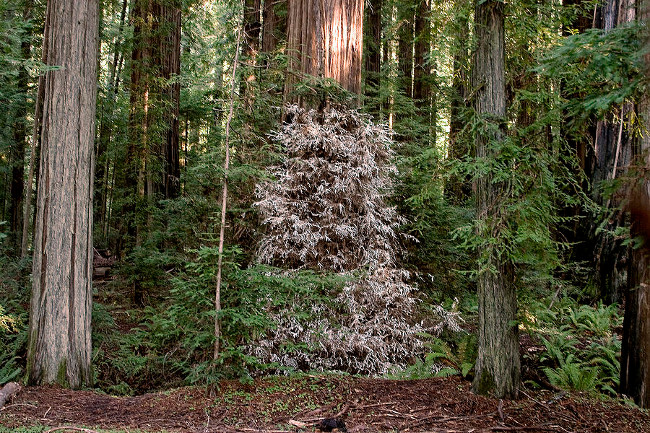The mystery of the 'ghost tree' poisoning itself in exchange for nutrients
This strange tree even caused many people to doubt their existence.
Since appearing in a coastal forest in California, USA, this albino rosewood has made scientists anxious for more than a century. This plant is also called "ghost tree" because it possesses a special white color, and has no chlorophyll to photosynthesize from sunlight. This is completely against the law of nature.

Albino rosewood.
The tree should die but why can it still exist?
Species live parasites
According to biologist Zane Moore, there is a scientific explanation for the existence of this "ghost tree" in California's coastal forest area.
Albino rosewood is an extremely rare species, currently there are only 406 plants worldwide. Therefore, scientists encountered many difficulties in finding this plant to study.
This tree possesses the genome of up to 32 billion base pairs (in humans, 3.2 pairs). Each chromosome has up to 6 copies, not two like other plants. Until now, researchers have not been able to sequence the rosewood genome or any clues about the mutation that made them albino .
Rosewood has a special ability: self-replication . The vegetation layers are close to each other, thanks to the long roots. In cold winters, they share nutrients together. Scientists have demonstrated this by pouring dyes on trees in a grove of trees. After a while, the dye spreads to other plants through the root network.
This collaboration and symbiosis will end when the summer comes. At that time, each tree must exist on its own. Non-photosynthetic plants that survive will be removed from the nutrient-sharing system through the root system and die slowly when purchased.
According to Moore biologist, albino rosewood exists by sucking nutrients from healthy plants around. Therefore, they are also considered parasites and are called " vampire plants ".
For example, does rosewood accept a plant that lives from year to year on them?
Self-poisoning yourself in exchange for nutrients

Compare common rosewood and albino species.
The tiny albino rosewood lives among towering trees. They often "choose" places with less favorable conditions and favorable environmental pressures for the development of mutations .
Results of analysis of specimens showed that the leaves of albino trees contained heavy metals : copper, nicke and cadmium mixture. In albino trees, the heavy metal content is 2 to 10 times as much as the other healthy green needles.
According to Moore, albino trees attract more water due to their special structure. Therefore, the content of heavy metals flowing through the trunk increases. This is how they "poison themselves" in exchange for nutrients from the surrounding greenery.

Biologist Moore plans to hypothesize that albino rosewood has a symbiotic relationship with healthier congeners. In that relationship, they take on the role of storing toxins in exchange for the amount of sugar needed to survive.
Moore will experiment with growing albino rosewood and green rosewood in a nickel lab to test this symbiotic relationship. Whether they cooperate with each other, are the surrounding trees healthier when there are albino trees nearby.
Besides, Moore also wanted to determine the source of heavy metal in albino trees. It is available or absorbed by them from the soil. If hypothetical albino trees suck heavy metal from water, Moore hopes to grow them in polluted areas to clean up the soil from the toxic metals for green plants.
This takes time to study, but in the short term this albino species needs protection from the curiosity of many curious people. Even some people want to own them to have a natural white Christmas tree during Christmas.
You should read it
- 7 species of plants have special abilities like humans
- Butcher Broom - The exotic fruit tree grows from leaves
- The oldest tree in the world 'old' 9550 years old
- Not only people but even animals do not dare to array to the unique tree species on this planet
- Strange species of plants grow yellow right in Vietnam
- Extremely rare albino snakes found in Australia
 Did you know: 100 scientists, 28 countries are calling for seagrass protection
Did you know: 100 scientists, 28 countries are calling for seagrass protection The European eel species 'digests' the bones in the body to sustain life
The European eel species 'digests' the bones in the body to sustain life Horses and incredible records surprise you
Horses and incredible records surprise you Strange story about frogs laying eggs and taking eggs in bamboo trees
Strange story about frogs laying eggs and taking eggs in bamboo trees There are 50 venomous snakes, this is the most unique snake on the planet
There are 50 venomous snakes, this is the most unique snake on the planet Unexpected facts about elephants, animals that communicate with sound waves
Unexpected facts about elephants, animals that communicate with sound waves